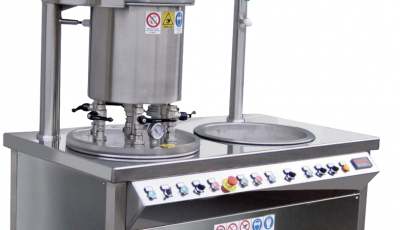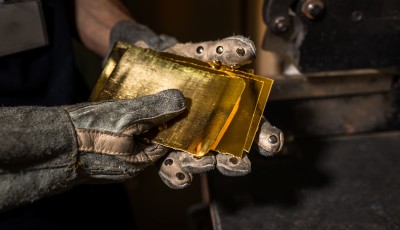Christopher Corti: The Best Microalloys for Gold
COreGOLD Technology Managing Director explains how calcium, beryllium, and gadolinium can harden 24kt gold
Pure gold, platinum, and silver, like all pure metals, are relatively soft and have a low yield strength, which presents several disadvantages in the manufacturing of gold, platinum, and silver jewelry at 24 carats. This characteristic limits design possibilities and makes such jewelry more susceptible to scratches and wear.
This softness also poses a problem for high-purity jewelry alloys, such as 22-carat gold. For 24-karat gold, the development of a gold-titanium ‘990’ alloy in the late 1980s overcame many of these issues but did not achieve great commercial success. However, in recent years, numerous hardened 24-karat gold materials have been developed, with a purity of 99.5% or higher, some of which have entered commercial production.
In these cases, increased hardness and strength have been achieved through microalloying, a technique also adopted for silver and platinum. Microalloying involves very small additions, generally below 0.5%. For gold and other precious metals, such small additions of specific metals, such as calcium, have a much greater effect as they are soluble in gold and readily form intermetallic compounds (secondary phases), finely dispersed within the precious metal matrix.
Numerous studies on the hardening of 24-karat gold through microalloying have been conducted in Japan, focusing on the use of metals such as gadolinium, beryllium, and calcium, and some of these have been commercialized. For example, in the mid-1990s, Mitsubishi Materials developed high-strength pure gold (HSPG), and in 1999, I presented research on this topic at the Santa Fe Symposium. Since then, I have extended my studies to all precious metals used in jewelry and other high-carat gold alloys, and I have also developed an interest in unusual gold colors such as purple, blue, and black, analyzing how they can be used in jewelry.
These colors, in some cases, are intrinsic to the alloy, while in other cases, they are surface coatings, such as patinas, oxide interference films, and electroplated layers.
This softness also poses a problem for high-purity jewelry alloys, such as 22-carat gold. For 24-karat gold, the development of a gold-titanium ‘990’ alloy in the late 1980s overcame many of these issues but did not achieve great commercial success. However, in recent years, numerous hardened 24-karat gold materials have been developed, with a purity of 99.5% or higher, some of which have entered commercial production.
In these cases, increased hardness and strength have been achieved through microalloying, a technique also adopted for silver and platinum. Microalloying involves very small additions, generally below 0.5%. For gold and other precious metals, such small additions of specific metals, such as calcium, have a much greater effect as they are soluble in gold and readily form intermetallic compounds (secondary phases), finely dispersed within the precious metal matrix.
Numerous studies on the hardening of 24-karat gold through microalloying have been conducted in Japan, focusing on the use of metals such as gadolinium, beryllium, and calcium, and some of these have been commercialized. For example, in the mid-1990s, Mitsubishi Materials developed high-strength pure gold (HSPG), and in 1999, I presented research on this topic at the Santa Fe Symposium. Since then, I have extended my studies to all precious metals used in jewelry and other high-carat gold alloys, and I have also developed an interest in unusual gold colors such as purple, blue, and black, analyzing how they can be used in jewelry.
These colors, in some cases, are intrinsic to the alloy, while in other cases, they are surface coatings, such as patinas, oxide interference films, and electroplated layers.






